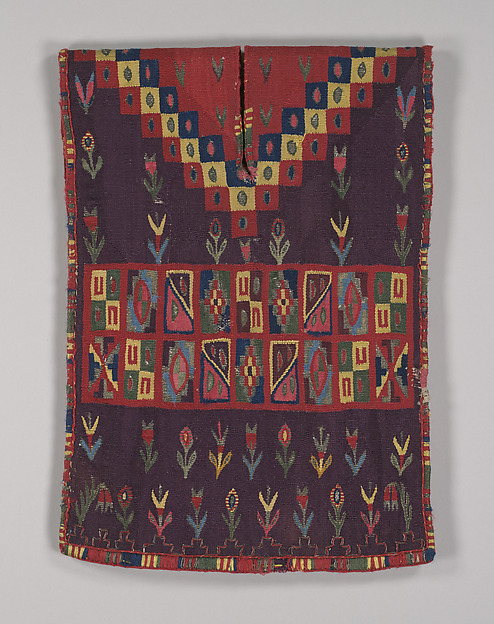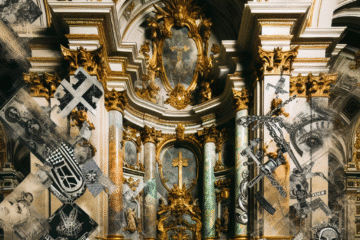
Image title: Miniature tabard
Medium: Cotton, camelid hair, silk, metal
Date: 1600–1700
Source:
The Met Collection
“
Once we accept our limits, we go beyond them.
”
— Albert Einstein
Beyond Pigment: The Radical Alchemy of Natural Dyes in African Textile Arts
Introduction: Color as Code
Across the vast and diverse landscapes of Africa, textile art is far more than a matter of ornament or function—it is a living language. Long before contemporary notions of sustainability or organic creativity entered the global discourse, African textile artists were already weaving environmental wisdom, spiritual symbolism, and acts of resistance into their cloth. Central to this legacy are natural dyes, derived from barks, leaves, roots, and insects—each hue telling a story encoded through generations. This blog explores how these plant-based dyes have served as cultural touchstones, political tools, and sacred expressions from ancient times to the modern era.
Chapter 1: Threads of Time — Ancient Dye Traditions
In ancient African societies, the invention of dyeing cloth with natural materials predates many written histories. Among the Yoruba people of what is now Nigeria, indigo-dyed cloths known as adire have been produced since at least the 11th century. Utilizing leaves from the indigofera plant, women artists developed resist-dye techniques that created complex patterns symbolizing proverbs, ancestral stories, and spiritual concepts. In Mali, the famed mud cloth or bogolanfini, created by the Bamana people, used fermented river mud and iron-rich leaves in a laborious, symbolic process that married alchemy with myth. These textiles were traditionally used in rites of passage, warfare, and healing rituals, imbuing color with potent metaphysical charge.
Chapter 2: Colonial Dissonance — Disruption and Subversion
The colonization of Africa in the 19th and early 20th centuries brought devastating economic, cultural, and ecological disruptions. Imported industrial dyes and textiles began to flood local markets, threatening indigenous dye traditions. Yet even within these constraints, African artists found ways to subvert colonial narratives. Textile artists in Ghana, for example, began using kente cloth—woven with dyed silk and cotton—to communicate solidarity, status, and resistance. Each pattern and color combination carried meanings: gold for wealth, blue for harmony, and red for political struggle. During apartheid in South Africa, Xhosa women used beadwork and naturally dyed fabrics to defy dress codes imposed by colonial authorities.
Chapter 3: Revival and Resistance — The Pan-African Aesthetic
In the aftermath of African independence movements of the mid-20th century, traditional textiles gained renewed political and cultural significance. Natural dyes became emblems of decolonization and identity. In Tanzania, the kanga—printed cotton cloth sometimes dyed using indigenous methods—carried Swahili proverbs and slogans for women’s empowerment. Meanwhile, Nigerian artist Nike Davies-Okundaye began teaching adire techniques to urban youth in defiance of Western aesthetic dominance. The revival of natural dyeing was not nostalgia—it was reclamation. It exemplified a broader Pan-African strategy: using indigenous visual traditions to articulate a future liberated from the epistemologies of empire.
Chapter 4: Into the Metropolis — Diaspora and Hybrid Forms
The African diaspora has carried natural dye traditions into global metropolises. Textile artists from Senegal to Brooklyn blend ancestral dye techniques with contemporary forms to explore hybrid identities. For example, artists like Aboubakar Fofana of Mali use indigo dyeing as both technique and philosophy. Fofana links the slow, rhythmic fermentation process to Islamic Sufi practices, emphasizing patience and humility. Natural dyes here are no longer only tied to ethnicity or geography—they become metaphors for transformation, migration, and cultural negotiation. This intersection of art, craft, and spirituality reflects how textile practices evolve without losing their ancestral roots.
Chapter 5: Digital Dyescapes — Technology Meets Tradition
In the digital age, natural dyeing is experiencing a fascinating intersection with technology. Open-source dye recipes, apps for identifying plant species, and online educational platforms have democratized access to these once-secretive traditions. Contemporary African designers are incorporating natural dye aesthetics into fashion-tech hybrids—such as wearable art that integrates augmented reality with hand-dyed fabrics. In this context, natural dyes express a dual consciousness: ancestral wisdom coupled with futuristic vision. In doing so, they challenge the Western dichotomy between nature and innovation. Color in African textile arts remains more than beauty—it is code, memory, and prophecy.
Conclusion: The Living Language of Color
From the indigo vats of Yorubaland to the digital looms of Nairobi, the story of natural dyes in African textile arts is one of resilience, reinvention, and radical creativity. Plant-based pigments are not mere materials—they are repositories of history, emblems of resistance, and beacons of identity. As the global art world increasingly reckons with sustainability and equity, the ancestral dye traditions of African artists offer not only visual inspiration but a blueprint for thoughtful, intentional creation. The next time you see a deep indigo robe or ochre-dyed wrap, remember: you are looking not just at color, but at a story centuries in the making.

Image description:
lumps of processed indigo for dyeing at the Porfirio Gutierrez family workshop in Teotitlan del Valle, Oaxaca, Mexico
License:
CC BY-SA 4.0
Source:
Wikimedia Commons
Useful links:


